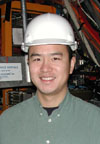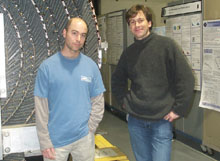 | Thursday, February 26, 2004 |
|
National Engineers Week 2004 Thursday, February 26 THERE WILL BE NO THEORETICAL PHYSICS SEMINAR TODAY 9:00 a.m. Engineering Updates - WH10N - West Wing Jim Volk, AD - Alignment Improvement to Tevatron Vic Kuchler, FESS - Linear Collider Civil Design 3:30 p.m. DIRECTOR'S COFFEE BREAK - 2nd Flr X-Over 4:00 p.m. Accelerator Physics and Technology Seminar - 1 West Speaker: R. Talman, Cornell University Title: String Formulation of Space Charge Forces in a Deflecting Bunch
Friday, February 27 |
|
Thursday, February 26 Wild Mushroom soup Orzo pasta w/chicken, artichokes, olives and sundried tomatoes $3.50 Hawaiian sweet and sour pork over jasmine rice $3.50 Ham & mozzarella wrap w/basil cream cheese $4.75 Buffalo style chicken wings served w/soup or fries $4.75 Hand rolled Hanabi sushi Eurest Dining Center Weekly Menu Chez Leon |
|
Extended Forecast |
Secon Level 3 |
| Fermilab Today is online at: http://www.fnal.gov/today/ Send comments and suggestions to today@fnal.gov Fermilab Today archive Fermilab Today classifieds Subscribe/Unsubscribe to |
|
Feedback wanted on Performance Appraisal System | |
| |
|
The Laboratory Services Section is looking for your feedback on the new performance appraisal system. This is the first year in which the new system is fully implemented. As with any new process there is opportunity for improvement.
Over the last three months LSS has held a series of meetings with managers to hear from them. From division heads to department managers, from directors to randomly selected supervisors, LSS has received their feedback. Equally important, LSS now wants to hear from employees who have undergone evaluation and participated in appraisal conversations.
To facilitate the feedback process, LSS managers have prepared a
questionnaire. A few days ago all employees received a
memo from Director Michael Witherell with a paper
copy of the questionnaire. Please fill
out the form and mail it to M.S. 107 by
March 15. You may submit the information
anonymously. Alternatively, employees
can fill out an online form
or send an email to feedback@fnal.gov.
All feedback will be kept in strictest confidence.
LSS will only report ideas and suggestions in summary
format to the Directorate. Fermilab Today will announce
the URL to the final LSS report as well as
any resulting changes to the performance appraisal process.
|
Craig Venter to Speak at Science Institute Day Tomorrow
All Fermilab employees are invited to attend the Symposium on the Nature of Science. In addition to Venter's keynote speech, which kicks off the day for Symposium and Resource Fair attendees, the Symposium will include lectures on the physics, chemistry and biology of the Human Genome Project. Leon Lederman will provide closing remarks. "The theme for the day is the interdisciplinary nature of science," said Spencer Pasero of Fermilab's Education Office. "The Symposium speakers will be talking about their own work and making connections to other areas of science."
All lectures will take
place in Ramsey Auditorium.
The complete schedule can be found online.
|
|
February 23 - February 25 - During this period Operations established one store. That store along with one that already existed provided approximately 44 hours and 47 minutes of luminosity to the experiments. - Booster had power supply problems with GMPS and CEPNE1. - Pbar had a power supply problem with A:IB. - Operations sent beam to experiment located at MT6 in the Meson Detector Building.
View the current accelerator update |
|
From Science Daily, February 19, 2004 How Did Matter Come To Dominate The Universe? San Francisco, CA -- The seemingly unremarkable fact that the universe is full of matter turns out to be something physicists can't quite account for. According to the big bang theory, equal amounts of matter and antimatter were created at the birth of the universe, but precious little antimatter is to be found in the universe today. Everything we see, from our bodies to our cars to the stars in distant galaxies, is made of matter. Cosmic rays and high-energy physics labs routinely create antimatter particles, but they soon interact with particles of matter and vanish in bursts of pure energy. Read more |
|
Studying the Strong Interaction with Charm Meson Production at CDF | ||
| ||
|
In Run I of the Tevatron, both CDF and DZero measured
the production
probability, or cross section, of bottom quarks. The measured cross sections
were found to be two to three times larger than expected. There was
speculation
that the higher production rate could signal the creation of some
new particle. Recent
theoretical developments have reduced this discrepancy, but
the measured
rates are still in excess of predictions. Because charm quarks
are approximately three
times less massive than bottom quarks, measuring charm particle
production tests
the theory in a different way.
For Run II, CDF constructed the Silicon Vertex Tracker or SVT to trigger the experiment on the decays of hadrons containing bottom quarks by exploiting the relatively long lifetime of these bottom hadrons. When the SVT was commissioned, the collaboration found that this trigger was very efficient for detecting hadrons containing charm quarks as well. The charm hadron cross section was measured using only the first few inverse picobarns of data collected with the SVT, and this measurement laid the foundation for the much wider program in charm physics now undertaken by CDF. This program includes searching for new physics by looking for CP asymmetries in charm hadron decays, D0 mixing, and rare decays.
The figure above shows the production cross section of D0 mesons, which are a bound state of a charm quark and an up antiquark, as a function of the transverse momentum of the charm meson. The points are the data and the yellow band shows the theoretical prediction. As with bottom hadron production, the data lie above the theoretical prediction and the size of the discrepancy is comparable to the size of the discrepancy between data and theory for bottom hadrons, pointing more towards needing further understanding of the theory of production of heavy quarks, rather than an explanation that involves new particles. These results are the first Tevatron Run II results that are published in Physical Review Letters. | ||
|
Result of the Week Archive |
|
URA Scholarship Deadline is March 1 Universities Research Association, Inc. (URA) offers a number of four-year scholarships to children of regular full-time employees of Fermilab. The scholarship award will be continued for a maximum of four years providing the student remains in a four-year program with satisfactory academic progress at college. The maximum scholarship award amount available for tuition and fees is $4,000 per year. Application forms for the URA scholarship are available and should be submitted by March 1, 2004. more information |
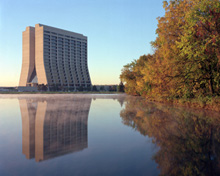
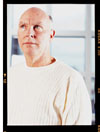
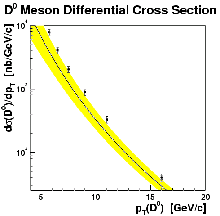 '
'